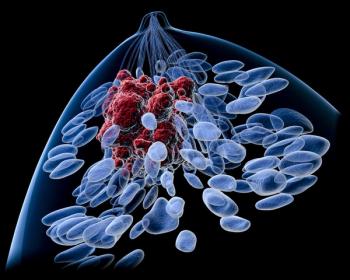
Dermatologic Care May Be Linked to Increased Adherence to Prophylaxis Protocols for EGFRi-Associated Rash
A restrospective study published in JAMA Dermatology found that integrating dermatologic care into oncology practices might be associated with an increased adherence to evidence-based prophylaxis for EGFRi-associated rash.
The integration of dermatologic care into oncology practices may be associated with increased adherence to evidence-based prophylaxis protocols for epidermal growth factor receptor inhibitor (EGFRi)-associated rash, according to a study published in JAMA Dermatology.
More, dermatologists may raise awareness of appropriate treatment options, which could minimize toxicity-associated chemotherapy interruptions and improve quality of life.
“The results of this study highlight the value of integrating dermatologic care and education into oncology centers by increasing adherence to evidence-based prophylaxis protocols for rash and appropriate treatment agent selection, which may minimize toxicity-associated chemotherapy interruptions and improve quality of life,” wrote the researchers.
In this retrospective cohort study, 118 patients were treated with cetuximab in 2012 and 90 patients were treated with cetuximab in 2017. The majority of patients treated with cetuximab in 2012 and 2017 were men (n = 85 and 70, respectively) and a median age of approximately 62 years.
Overall, 29 patients (25%) in 2012 and 42 patients (47%) in 2017 were prophylactically treated for skin toxicity (P < .001) at cetuximab treatment initiation. Over that time period, preemptive tetracycline use (45% to 71%; P = .02) and topical corticosteroid use (7% to 57%; P < .001) increased, while topical antibiotic use (79% to 43%; P = .002) decreased.
After adjusting for treatment site and year, the research also found that the patients who were prescribed prophylactic treatment were 94% less likely to need a first rescue treatment (adjusted odds ratio [OR], 0.06; 95% CI, 0.02-0.16; P < .001), 74% less likely to need a second rescue treatment (adjusted OR, 0.26; 95% CI, 0.08-0.83; P = .02), and 79% less likely to have a cetuximab dose interruption (adjusted OR, 0.21; 95% CI, 0.06-0.81; P = .02) than patients who were not prescribed prophylactic treatment.
“There was a significant increase in the prophylaxis rate in 2017 compared with 2012; this increase occurred primarily at the main campus rather than at the satellite locations,” wrote the researchers. “Prophylactic agent selection also improved from 2012 to 2017 in accordance with published guidelines.”
The cohort consisted of all adult patients receiving at least 1 dose of cetuximab at the Dana-Farber Cancer Institute in either the year 2012 or 2017. Primary endpoints included rate of preemptive rash treatment and selection of preemptive agents. Secondary endpoints included incidence of rash, rates of rescue treatments, rates of cetuximab dose changes or interruptions, and overall survival at 2 years.
The study’s limitations included the retrospective nature of its design and any potential biases from incomplete documentation. More, the results from this study are from a single institution, which means the results may not be generalizable to other institutions or the overall oncology community.
“Further study is required to determine the association of the implementation of the remote components of STAT with guideline adherence and the generalizability to the greater oncology community, where physical access to oncodermatologists may be limited,” wrote the researchers.
Reference:
Yu Z, Dee EC, Bach DQ, et al. Evaluation of a Comprehensive Skin Toxicity Program for Patients Treated With Epidermal Growth Factor Receptor Inhibitors at a Cancer Treatment Center. JAMA Dermatol. doi:10.1001/jamadermatol.2020.1795.
Newsletter
Stay up to date on recent advances in the multidisciplinary approach to cancer.

















































































